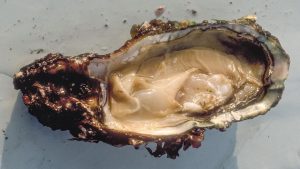Campylobacter jejuni is an important human pathogen commonly associated with raw poultry. The risk of cross-contamination in the kitchen is escalated with washing raw poultry in the sink- an unnecessary measure for food safety. Cook the bird to an internal temperature of 74°C (165°F), no need for washing.
Holly Van Hare of The Daily Meal reports:
You’re spraying your sink with salmonella
Washing your fruit? Absolutely. Washing your lettuce? Necessity. But running warm water over a slimy slab of raw chicken is just about the worst thing you can do with your kitchen sink.
In fact, it’s such a bad idea that the National Health Service (NHS) in Britain issued a public warning against the “sanitary” practice — claiming that “it can increase your risk of food poisoning from campylobacter bacteria.”
Chicken is one of the most commonly infected raw foods when it comes to foodborne bacteria such as salmonella. These bacteria lurk both on the surface and insides of the raw meat, growing indefinitely until you cook them dead. “Only a few campylobacter cells are needed to cause food poisoning,” the NHS says.
Washing the chicken involves running tap water over that infested piece of meat. The water becomes contaminated as soon as it hits the surface of your poultry, and proceeds to splash in every direction both inside and around your kitchen sink. “Water droplets can travel more than 50 centimeters in every direction,” the NHS warns, a distance that equates to over one and a half feet.
After that bacteria spreads, it’s hard to get rid of. The only real way to effectively kill the bacteria you’ve now sprinkled around your home is to disinfect everything — an onerous task you’re likely saving until after you’re done cooking. That means your risk of exposure is prolonged and the bacteria could even come into contact with your other food.
If you’re preparing chicken, skip the washing step. The oven kills everything, anyway — and once a chicken is properly cooked, it’s 100 percent free of disease-causing bacteria. If you’re bored with bland old chicken and looking to spice things up, here are 101 of our best recipes.







